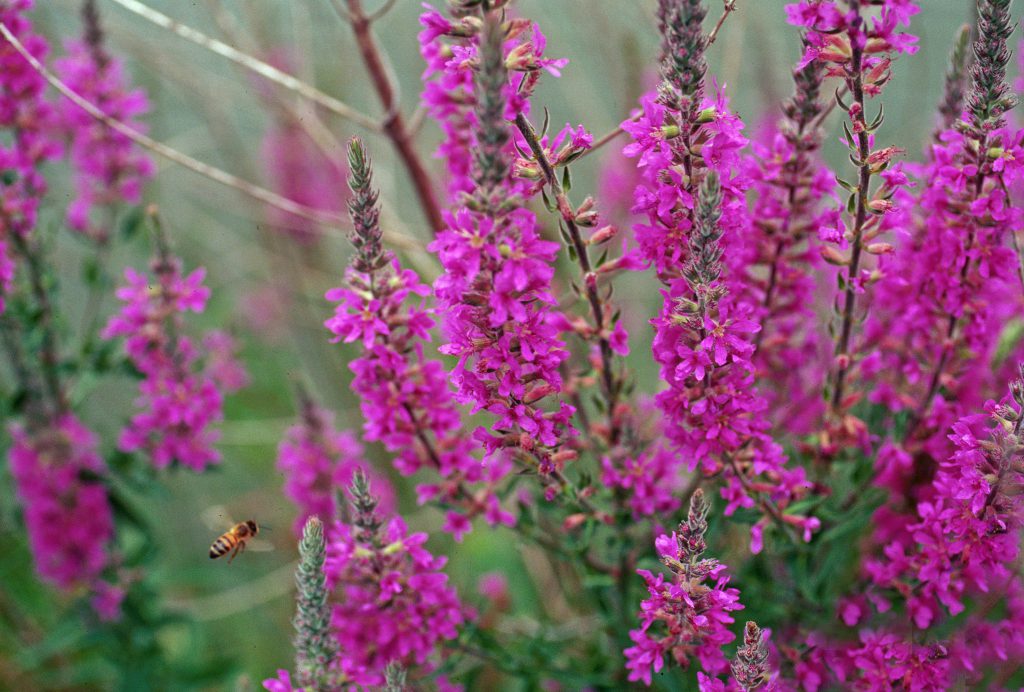Scientific name: Lythrum salicaria
What Is It?
Purple loosestrife (Lythrum salicaria) is a tall, wetland plant with reddish-purple flowers that completes its life cycle after several years. It grows in sunny wetlands, wet meadows, river and stream banks, ponds edges, reservoirs, and ditches. It is native to Europe and Asia and is responsible for degrading wetlands throughout the United States.
Is It Here Yet?
Yes, purple loosestrife has been documented throughout Washington.
Why Should I Care?
Purple loosestrife forms dense stands that outcompete native plants for space, light, and pollinators. It also provides poor habitat for native wetland birds. It alters wetland structure and function, clogs waterways and irrigation systems, affects agricultural production, and reduces the pasture quality for livestock grazing.
How Can We Stop It?
Remove any plants from gardens to reduce seed sources and do not plant purple loosestrife. This plant is on Washington’s Noxious Weed Seed and Plant Quarantine list, meaning it is prohibited to transport, buy, sell, offer for sale, or distribute leafy spurge plants, plant parts, or seeds. Purple loosestrife also is listed as a Class B Noxious Weed in Washington, meaning it is designated for control in certain state regions.
What Are Its Characteristics?
- May grow up to 6 feet tall and 4-5 feet wide.
- Stems are square and a plant may have more than 30 stems.
- Small reddish-purple flowers grow in dense, showy spikes at the top of each stem.
- Hairy, lance-shaped leaves are opposite each other on the stem.
How Do I Distinguish It From Native Species?
- Fireweed has much larger flowers, alternate leaves, and does not grow in wetlands.
- Spirea has flowers arranged in clusters and oblong leaves.
- Native primrose loosestrifes are yellow-flowered.
- Native hyssop loosestrifes are shorter with white to rose-colored flowers.
Additional Photographs


